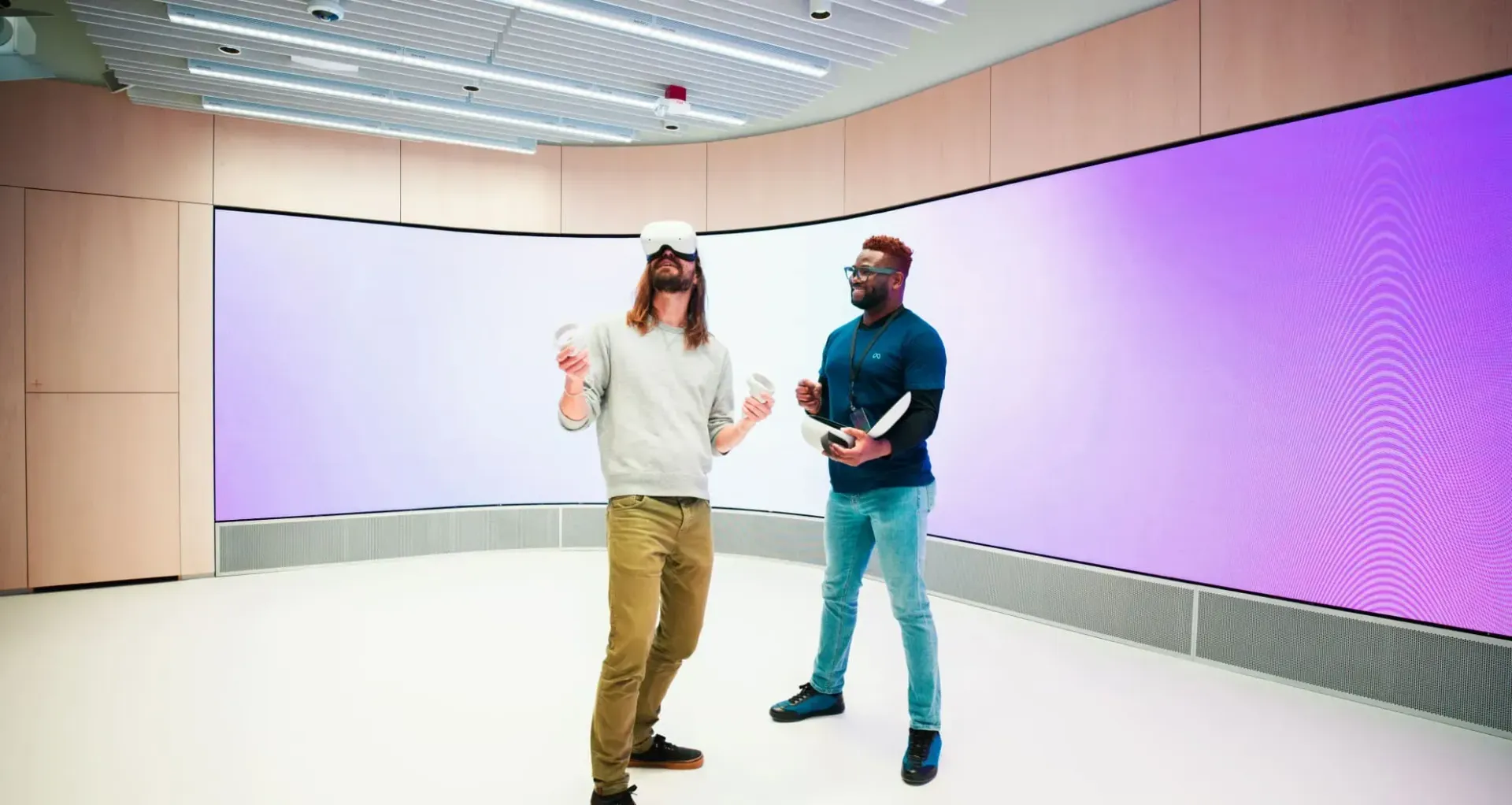Collaboration is fundamental to digital transformation
Collaboration is the key to your company's digital transformation. Discover how to achieve it and remain competitive in an increasingly digital market.

What is digital transformation?
You've probably heard the term digital transformation being bandied around at conferences and keynote speeches and in business articles. It's the corporate watchword of our time.
In a nutshell, digital transformation is the process of digitising old business models and reorienting your business strategy in keeping with an increasingly digital landscape.
The word "digital" can mean different things to different companies. It could be as simple as going paperless – or it could refer to the adoption of technologies and services to streamline business practice.
The desired net outcome of a digital strategy, however, is always dependent on the business. And identifying areas where transformation is needed is key to implementing digital workflows effectively.
But the reality is that embracing digital is essential to remaining competitive. According to Gartner's digital roadmap (via Quixy), 91% of companies have digitised some aspect of their business.
One important factor in a company's road to transformation is implementing tools to foster collaboration.
The value of collaboration tools
Digital collaboration isn't a new thing. It's not like we always had to meet in person to bash out ideas (though, admittedly, it was more frequent).
Cell phones and video conferencing software have been around since the 1990s. The first webcam was designed by a group of techy Cambridge University students in 1991.
However, these modes of communication set a benchmark for collaboration, which set the tone for digital transformation in the years to come.
Implementing collaborative tools comes with a host of advantages:
- Productivity: streamlining workflows and fostering remote collaboration saves on unnecessary travel (between floors or between sites) affording staff extra time and energy for important tasks.
- Cost-efficiency: cutting down on travel saves time and money, putting resources and people where they're most needed.
- Remote work: using the right tools can increase opportunities for remote collaboration and reshape old service models.
- Innovation and change: encouraging collaboration increases the exchange of ideas, driving innovation and effecting meaningful change.
The limitations of legacy collaboration tools
Though remote collaboration comes with a wealth of benefits, there are limitations in the way it has been traditionally implemented. These are largely the limitations of the medium itself.
Typical video conferencing tools have limited features. In some scenarios, these limitations are liable to interfere with and disrupt collaboration. Let's look at some examples.
1. Confusion and mistakes
Imagine you're working on a manufacturing site and a fault arises with one of the machines. You pull out your tablet, jump onto a video call with a technician and endeavour to troubleshoot the problem.
But showing the location of the issue means manoeuvring the tablet in awkward ways – possibly in ways that occlude the visual cues given by the technician. Extra care must be taken to describe the situation in the event the specialist is not provided with a clear visual of the problem.
2. No hands-free option
Likewise, at some point, you're going to have to put the tablet down and follow instructions. This can lead to confusing and cumbersome situations where you simultaneously need your hands to hold the tablet and operate the machinery.
3. Low bandwidth and limited tools
Similarly, video conferences can be plagued with connection dropouts and a limited set of tools to communicate ideas, such as live annotations and visual presentations. These can stifle ideas and throw meetings into disarray. (You've seen the viral videos!)
Digital transformation with SimplyVideo and XR collaboration
If collaborative tools for business like webinars and teleconferencing were the seeds of change, SimplyVideo is the ripened fruit, ready for harvest.
SimplyVideo sidesteps many of the problems with legacy tools with intelligent, user-oriented features that maintain your digital value chain.
1. Low-bandwidth video
Digital transformation means diddly-squat if you can't rely on stable connections to support your infrastructure. Fortunately, SimplyVideo's low-bandwidth video streaming capabilities strengthen those weak links by offering stable connections even in remote areas.
2. Chat 4.0
Chat functions of the past were often lean on features and offered little in the way of enterprise-ready functionality. Chat 4.0 is the next generation in digital collaboration.
Pairing SimplyVideo's Chat 4.0 with extended reality (XR) devices, users can quickly share images and start "see-what-I-see" video calls with intelligent voice commands. Within the chat, staff can annotate images sent from an XR device, helping workers in the field to accurately address problems and improving collaboration on and off site.
When a session has concluded, a history of the conversation and any assets or files shared is saved to the SimplyVideo cloud, ready to be accessed at any time and available to download as a PDF.
3. 3D asset visualisation
In the manufacturing and design sectors, schematics and design reviews are an integral part of the production timeline. For many companies, visualising assets and prototypes can be time-consuming and costly, involving 3D printing and travel, among other things.
SimplyVideo provides a platform for collaborators to visualise and share three-dimensional, life-like representations of project assets, from architectural design plans to machine components. Virtual images can be rotated in any direction and annotated by participants in the call or chat, accelerating completion times and boosting productivity.
4. Remote collaboration
Part of the lure of digital transformation for companies is the ability to broaden networks and diversify resources. Collaborating with third parties and foreign partners has never been easier, and with SimplyVideo, remote collaboration across teams and borders is made simpler and more effective.
Embracing remote collaboration through a digital framework helps shore up skills gaps in your workforce. For instance, trainee engineers can call on remote assistance with an assisted reality headset, sending their POV feed live and direct to the desktop or smartphone of an expert. This expert can then guide them through difficult tasks.
The bottom line
Making the move to digital is achievable if you know how. SimplyVideo's video collaboration software is here to give you a valuable head start.
Ready to transform your business from analogue to digital? As an XR-focused
alternative to Zoom and other videoconferencing platforms, SimplyVideo puts digital transformation first. Learn more about SimplyVideo's
enterprise-ready features – or
sign up for a 30-day free trial.












